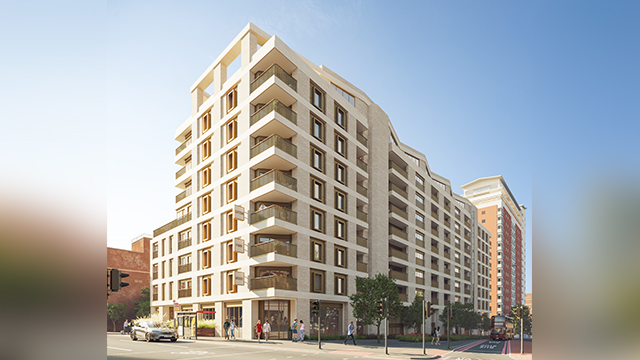Leasehold enfranchisement – Purchase price – Leasehold Reform Act 1967 – Leasehold Reform, Housing and Urban Development Act 1993 – Detached properties in London NW8 – Leasehold valuation tribunal determining enfranchisement prices – Assessment of freehold value with vacant possession – Development potential – Calculation of development hope value on collective enfranchisement claim – Appeals allowed in part
The appeals concerned the price payable to acquire the freehold of three detached, five-storey properties in Hamilton Terrace, St John’s Wood, London NW8, on three claims brought under the leasehold enfranchisement legislation. The same charity trustees were the landlords and freeholders of all three properties. All three properties had originally been built as single dwellings but had in the past been converted into flats.
The first two cases concerned enfranchisement claims brought by the long leaseholder of the property under the Leasehold Reform Act 1967, with the price to be determined under section 9(1C) of that Act. In the first case, the property had had been re-converted into a single dwelling and had a basement extension containing a swimming pool, gym, two self-contained flats and other leisure and domestic facilities. The lease had 37.91 years unexpired at the valuation date of November 2010.
In the second case, the property was still arranged as five flats, but it was not disputed that planning permission would be available to re-convert it to a single dwelling. The lease had only six months left to run at the October 2010 valuation date and it was accepted that the enfranchisement price should be the value of the freehold with vacant possession (FHVP).
The third case concerned a collective enfranchisement claim under Chapter I of Part I of the Leasehold Reform, Housing and Urban Development Act 1993 in respect of a property that was divided into four flats let on long leaseholds; the enfranchisement price fell to be determined in accordance with section 32 and Schedule 6 of that Act. Three of the leases had been the subject of statutory extensions to 2136, while the fourth was for a term expiring in 2046. There was also a headlease expiring in 2046. The property had a garden although its use was shared with another nearby property.
Various parties were dissatisfied with the enfranchisement prices determined by the leasehold valuation tribunal and they appealed to the Upper Tribunal. The principal issue on each of the appeals was the value of the FHVP value of the relevant property on the valuation date. The valuation dates fell during a period when the prime central London (PCL) residential property market had begun to recover from an earlier sharp decline during the global financial crisis of 2008 and there was limited evidence of market transactions involving comparable properties. In the third case, there was also an issue over the assessment of development hope value when calculating the enfranchisement price.
Held: The appeals were allowed in part.
(1) The main comparable properties for valuation purposes were other property sales in Hamilton Terrace, which were of two types: first, “bottom up” comparables, namely un-modernised freehold houses which had been sold as being ripe for redevelopment, an, second, “top down” comparables comprising freehold houses sold after having been redeveloped, with the values adjusted where necessary by a percentage reduction to produce the unimproved value. An analysis of the comparables supported a FHVP value of £10.75m for the first appeal property, which produced an enfranchisement price of £2,862,260. In respect of the second appeal property, an adjustment of 10% needed to be made for the lack of off-street parking when compared to other properties that had such parking, since off-street parking was a substantial advantage in that location. Further, that property had not yet been redeveloped and it was relevant that the presence of tree roots placed constraints on the amount of basement accommodation that could be provided; overall, the second appeal property could sensibly be redeveloped to provide a gross internal area GIA of 9,000 sq. The risk that planning permission might not be obtained to restore the property from flats to a house was negligible. A 5% allowance should be made to reflect the fact that the property was overlooked by neighbouring properties. Making the necessary adjustments to the comparables produced a FHVP value of £7.75m for the second appeal property, which was also the enfranchisement price.
In respect of the third appeal property, the lack of physical constraints such as tree roots made it reasonable to assume that development would be undertaken to produce a GIA of 10,836 sq ft. However, the FHVP value was affected by the fact that the third appeal property shared a garden with another property. If the property were re-converted into a single dwelling, the owner would not countenance a garden-sharing arrangement. The most likely solution would be for the owner of the third appeal property to transfer part of the rear garden to the owner of the other property in return for the extinguishment of the rights over the remaining garden, so creating separate gardens for each property. A prospective purchaser of the third appeal property would make a significant discount from the purchase price to reflect the risk that a satisfactory agreement would not be reached on that issue. The appropriate allowance for that risk was 25% of the difference between the FHVP value of the third appeal property as a house, as derived from the comparables, and the agreed £3.7m FHVP value of the four flats. On that analysis, the FHVP value was £6.75m.
(4) In respect of the third appeal property, the price payable on enfranchisement could include “development hope value” attributable to the potential to redevelop the property into a larger and more valuable single residence in the future: Padmore v Official Custodian for Charities [2013] UKUT 646 (LC); [2014] PLSCS 18 and Cravecrest Ltd v Duke of Westminster [2012] UKUT 68 (LC); [2012] PLSCS 171 applied. That value should be assessed on the assumption that it could be realised only at the expiry of the leases to which the freehold interest was subject. It was relevant that three of the leases of the flats had been the subject of statutory extensions by the grant of new leases, pursuant to section 56 of the 1993 Act, for terms expiring 90 years after the term dates of the original leases at a peppercorn rent. By virtue of section 57(7)(b) of the 1993 Act, the freeholder would enjoy a statutory right to terminate the three leases at their original expiry date in 2046 by applying to the court under section 61, provided it could demonstrate a sufficient intention to demolish or reconstruct the whole or a substantial part of the property or to carry out substantial works of construction that could not reasonably be done without obtaining possession of the flats: Kutchukian v Keepers and Governors of John Lyon Free Grammar School [2013] EWCA Civ 90; [2013] EGILR 3; [2013] 02 EGLR 97 applied. The lease of the fourth flat and the headlease were also due to expire in 2046. In those circumstances, a well-advised purchaser of the freehold interest in the third appeal property as at the 2009 valuation date would have been aware of the opportunity that section 61 created for it to acquire possession of all four flats in or around 2046 in order to undertake a substantial redevelopment of the building. That opportunity would increase the amount that a purchaser of the freehold interest would be willing to pay. Such a purchaser would calculate the sum that it was prepared to pay for the freehold on the assumption that the property would be held as a long-term investment until the original term date of the extended leases and would then be converted and extended to create a substantial house in single occupation.
However, given the lapse of time before the realisation of that ambition, the hypothetical purchaser would heavily discount the anticipated profit from the prospective redevelopment to reflect a number of specific risks, as well as deferring it to reflect changes in the real value of money. Starting from the £6.75m FHVP value as of April 2009, an agreed sum of £2.7645m should be deducted to represent the compensation payable to the lessees of the three flats under Schedule 14 of the 1993 Act in the event of their early termination under section 61. The resulting figure of £3.9855m represented the increase in the value of the third appeal property in the event of its conversion from four flats to a house for single occupation. That development uplift would not be available until 2046 at the earliest and a further year should also be added to the deferment period to reflect the risk of delays in obtaining vacant possession in 2046. Deferring the receipt of the development uplift for 37.94 years, at a deferment rate of 5%, produced a net present value of £626,122.
A purchaser of the freehold interest would further discount the development uplift that it hoped to achieve in 2046 for the risk that circumstances might change in the meantime. A discount of 35% was appropriate to reflect the serious risk that the market’s current strong appetite for such properties to be returned to single occupation might be diminished or reversed by 2046: Kutchukian applied. A further 5% discount was necessary to reflect the risk that changes in planning policy might make it more difficult to obtain planning permission to return the property to its original configuration as a house in single occupation. The enfranchisement price for the third appeal property should include £288,086 for development value on reversion. Overall, the enfranchisement price was £480,882.
(5) Development hope value for the third appeal property could not be valued on the alternative assumption that a hypothetical purchaser might buy in the necessary leasehold interests in the relatively short term. Even assuming that the lessees of each of the flats would have been receptive to enquiries regarding their interests and intentions, it was not possible to find that a reasonably prudent purchaser would have succeeded in tempting them into a deal at that point in the market. The owners of the leasehold interests would have been happy to wait until the market improved before disposing of their interests, or at the very least would have insisted on favourable assumptions being made concerning the value of their interests as the price of their agreeing to sell them at such an unfavourable time: Cravecrest distinguished. No reasonably prudent purchaser would have been prepared to acquire the third appeal property in April 2009 at a price that was dependent on the achievement in the near future of an agreement for the acquisition of the headlease and the leases of the four flats, as well as for the release of the shared garden rights. The prospect of achieving the necessary agreements was too speculative and the potential for ransom too great for there to be any realistic prospect of a bank or institutional funder being prepared to back such a scheme at a time of such extreme economic uncertainty; nor would a developer have been willing to stake his own capital on such a venture.
Mark Loveday (instructed by Pemberton Greenish LLP) appeared for the freeholders; Edwin Johnson QC (instructed by David Conway & Co) appeared for the leaseholder respondent in the first appeal and appellant in the third appeal; in the second appeal the leaseholder respondent did not appear and was not represented.
Sally Dobson, barrister







